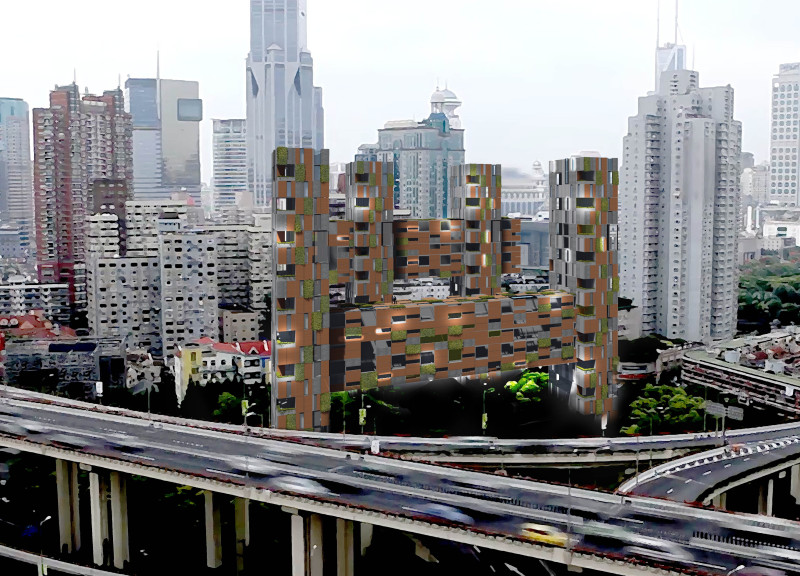5 key facts about this project
The "Living Districts" project is a comprehensive architectural design aimed at addressing the needs of urbanizing populations, particularly in China, where significant internal migration is occurring. This initiative focuses on creating flexible housing solutions that cater to the diverse requirements of relocated individuals, blending elements of both rural and urban living. The project consists of modular housing units that can adapt to the changing needs of residents over time, promoting a sustainable and community-oriented environment.
Modular Housing Design
Central to the "Living Districts" project is its modular housing design, which is divided into three distinct generations. The first generation features basic 3-meter cube units built on a concrete skeletal framework, allowing for individual customization of living spaces. This approach prioritizes flexibility, enabling families to tailor their homes based on personal requirements.
The second generation emphasizes vertical expansion, incorporating both residential and commercial spaces to create a multifunctional community. This design encourages a blend of work and personal spaces, fostering interaction and collaboration among residents. The final generation evolves into mixed-use high-rises, facilitating the accommodation of diverse businesses and offices within the same architectural environment, promoting economic development and sustainability.
Community-Centric Approach
A core aspect of the "Living Districts" project is its focus on community building. Public spaces have been thoughtfully integrated into the design, serving as communal hubs that promote social interaction among residents. Pathways and green areas connect different housing units and public amenities, enhancing the sense of community. This layout not only facilitates engagement but also promotes a healthier lifestyle through access to outdoor spaces.
The architectural approach also emphasizes environmental sustainability. The materials used include concrete for durability, glass for natural lighting, metal panels for modern aesthetics, and wood to provide warmth to the overall environment. Moreover, the integration of greenery throughout the design addresses urban heat concerns and contributes to improved air quality, making it a notable component of the project.
Overall, the "Living Districts" project stands out in its commitment to flexibility, community engagement, and environmental responsiveness. Interested readers are encouraged to explore the architectural plans, architectural sections, and architectural designs to gain a deeper understanding of the innovative ideas infused into this project.


























